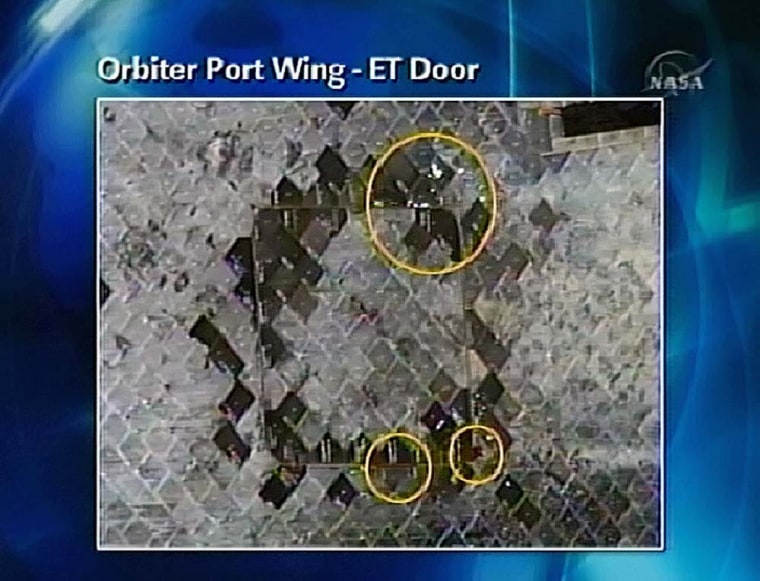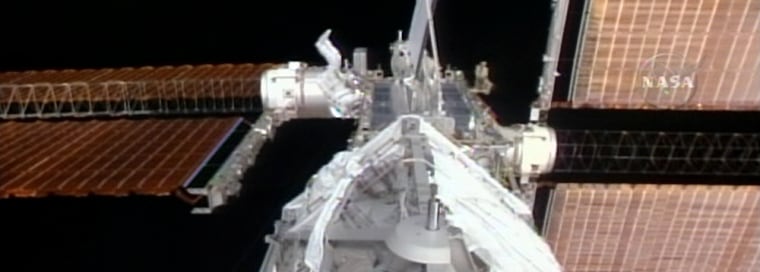Astronauts completed a nearly seven-hour spacewalk Tuesday, the first of three difficult forays outside during the shuttle Discovery’s stay at the international space station.
U.S. astronaut Robert Curbeam, a veteran spacewalker, and the European Space Agency’s Christer Fuglesang, who was making his first spacewalk, installed an addition to the orbiting space lab. They stepped back inside the spacecraft at 10:07 p.m. after 6 hours and 36 minutes of toiling outside.
Just before doing that, though, the pair sent a cosmic shout-out.
“I just want to say congratulations to all the Nobel Prize winners this year and especially to John Mather from Goddard Space Center,” Curbeam said of this year’s physics honoree. “We’re proud of you.”
Mission Control astronaut Steve Robinson radioed back: “From here on the ground, we’d like to send our congratulations for a 100 percent successful first EVA,” or extravehicular activity, the technical name for a spacewalk.
Curbeam and Fuglesang guided mission specialists Joan Higginbotham and Sunita “Suni” Williams as they used a robotic arm from inside the station to install a 2-ton, $11 million addition along the space lab’s truss in a space where clearance at times was less than 3 inches.
“We don’t want to scream over the loop,” said Higginbotham, referring to the communications system that links the spacewalkers, Mission Control and the space station, after a difficult maneuver. “But we’re very happy.”
The spacewalkers, who are tethered at all times, later connected utility cables between the addition and an existing solar array; replaced a field camera outside the station; and moved a handle that was used to grip the new segment.

The spacewalk started several hours after NASA engineers studying Discovery’s heat shield for damage recommended against any extra inspection of the spacecraft’s belly and wings.
The engineers’ recommendation doesn’t mean the shuttle was cleared of damage, since experts were still reviewing data, but it was an optimistic sign. Later in the day, mission managers approved the recommendation.
The additional inspection had been considered for Wednesday to get a better look at dings spotted on the heat-resistant tiles on Discovery’s belly and the shuttle’s wings, where sensors detected “very low” readings on Sunday and Monday, possibly from shock waves and a micrometeoroid. Engineers also are interested in an orange cellophane-like material, used to keep nitrogen in place during launch, that was sticking out of the shuttle’s left external fuel tank door.

The engineers’ recommendation was welcome news for the crew and flight controllers who have been especially alert to damage to the shuttle’s heat shield since the Columbia tragedy in 2003. A piece of foam broke off Columbia’s external fuel tank during liftoff and gashed a wing, allowing hot gases to penetrate the spacecraft during its return to Earth. All seven astronauts died.
In post-Columbia missions, NASA has images taken during liftoff as well as meticulous camera inspections using the shuttle’s robotic arm attached to a boom. Discovery’s astronauts on Monday also took some impromptu photos of the wing using the shuttle’s robotic arm.
Another inspection of Discovery’s heat shield is planned next week after the shuttle undocks from the space station, and engineers plan to take that opportunity to study the area of the wing where they think the micrometeoroid struck.
